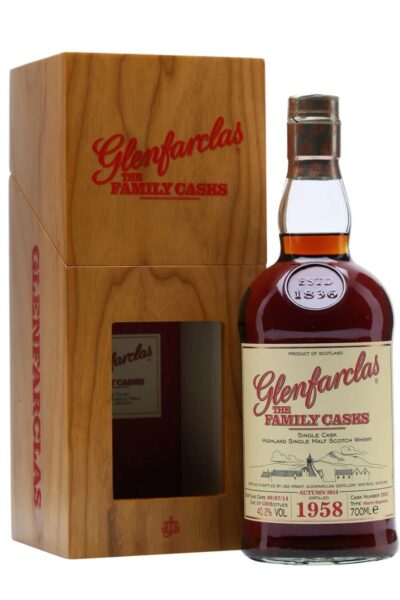Glenfarclas
Glenfarclas has always done things its own way. While rivals have been snapped up over the years, the Speyside distillery believes that being independent and family-owned is why it is still going strong.
Glenfarclas can seem like a lonesome place to make whisky. But for its large number of warehouses, from a distance it looks more like a farm steading than a distillery, and for much of its history the farm mattered more than the whisky.
Asked when that changed, sales director George Grant smiles.
“Oh, about 1990,” he says, and he’s only half joking. “It really has been in the past 30 years that it has become a serious business.” Whisky was a sideline project in 1865 when his ancestor, John Grant, bought the Recherlich Farm and its distillery, established by a previous tenant 30 years earlier.
Glenfarclas was valued at just £511, and for the next two decades it was run by a local distiller, John Smith.
While these farmyard roots are not uncommon among whisky distilleries, in an industry dominated by corporate giants Glenfarclas is almost unique in that it remains independent and is owned by the same family. Representing the sixth generation, George Grant claims family ownership speeds up decision‐making no end. “You can be much more fleet of foot and more fluid,” he says. “And it gives a face to the brand.”
COMMITMENT TO THE BRAND
Bottles of Pure Old Glenfarclas‐Glenlivet were being shipped to the US as early as 1887. But the commitment to build a single malt brand happened more than a century later. “In 1952, 96% of what we were making was sold to blenders. And it’s been a slow adjustment since,” he says. Now, around two‐thirds of production is bottled as Glenfarclas.
Soon after that first US export the family rebuilt the distillery with the help of the Pattison Brothers of Leith. Who were given a 50% stake in the business. Pattison was one of the biggest blenders around and when it went bust in 1898. It gave the whisky industry the worst hangover in its history.
The crash caused a chain reaction that toppled a string of whisky firms, but amazingly not Glenfarclas.
“It took us a generation to get back on an even keel,” says Grant. “We basically lost 50‐60 years, but from that point on we realised. We would never go into partnership with anyone else again.”
He credits his grandfather, George S Grant, as being the. First to begin laying down stocks, in the 1950s: “He said if we wanted to survive as an independent company, we needed to start putting more bottles out there with the name Glenfarclas on them.”
























